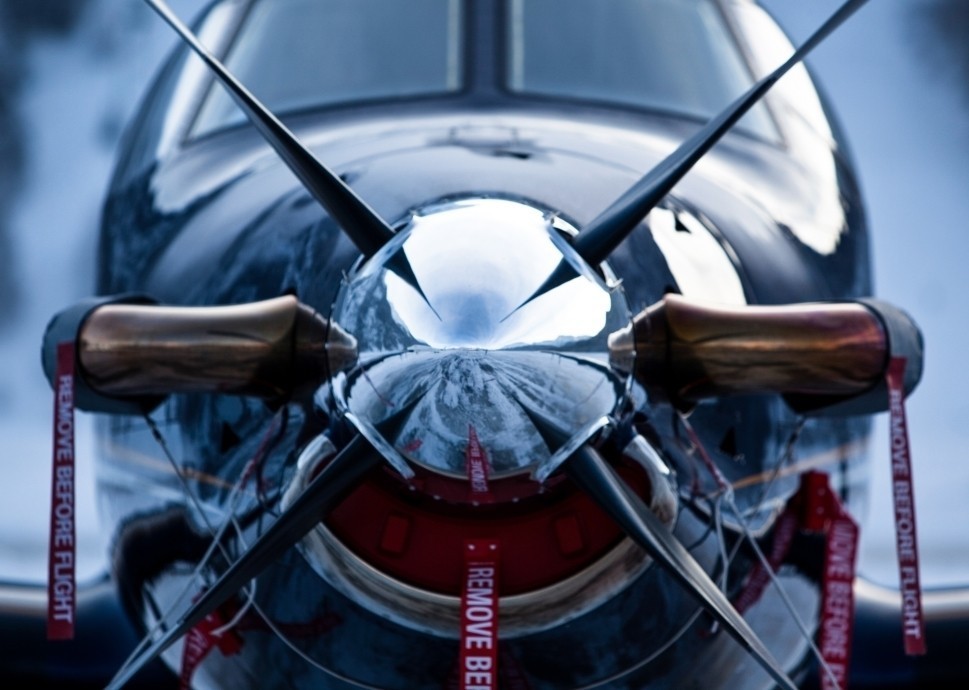- 22 Aug 2019
- AvBuyer
- Engines - BizAv
What is Turboprop Engine Maintenance?
Providing a guide on the need-to-know issues of turboprop engine maintenance, Chris Kjelgaard details why you should keep on top of your engine maintenance, how often, who can best provide for your maintenance needs and how much it costs.
Back to Articles
What should you know about business turboprop engine maintenance? How do turboprops work, how often is maintenance required for these types of engines, and what does it cost? Chris Kjelgaard explains…
Why do turboprop engines need maintenance?
While internal combustion engines in cars and gas turbine engines (such as turboprops) in Business Aviation are very different, they all need to be maintained carefully, and for the same reasons.
Just as overhauling your car engine in accordance with its recommended service schedule helps ensure your vehicle has a long lifespan, operating reliably and economically, so maintaining your business aircraft’s turboprop engines in accordance with their recommended maintenance schedule helps ensure the aircraft offers optimal performance and stays reliable and durable for long periods between inspections and shop visits.
By following a turboprop engine’s recommended maintenance schedule closely, you can prevent unexpected, costly repairs and unnecessary part replacements.
How do turboprop engines work?
While turbofan (jet), turboprop and turboshaft (helicopter) engines are all gas turbine engines, turboprops and turboshafts operate differently from jet engines.
All three types induct and compress air, then mix it with vaporized fuel and combust the mixture to generate hot exhaust gas which drives turbine stages. However, while in the case of turbofan engines much of the exhaust gas directly produces thrust, this is not the case in turboprops.
Instead, the gas turns turbine stages which drive a very fast rotating spool. The spool is linked by means of a large planetary reduction gearbox to a drive shaft which rotates at a much-reduced rate. In a turboprop engine that drive shaft turns a large propeller, which pushes and accelerates large amounts of air behind the aircraft, creating an equal-opposite reaction which moves the aircraft forward at high speed.
The turbine-driven spool which goes into the center of the reduction gearbox rotates at about 17,000 rotations per minute (rpm), but the propeller drive shaft driven by the reduction gears in the gearbox turns at peak rotation rates of 1,700-2,100 rpm.
Turboprops are used to power many aircraft types because they offer better propulsive efficiency and better fuel efficiency than jet engines (turbofans).
There is a performance trade-off, however: turboprops don’t usually fly as fast, as high, or as far as jets. But Business Aviation turboprop engines are also much cheaper to buy than business jet engines, because they’re smaller, less powerful, simpler, and have fewer complex parts.
While many families of turbofan engines exist to power business jets, the Business Aviation turboprop market essentially consists of just four major families:
- GE Aviation H-Series;
- Honeywell (formerly Garrett) TPE331;
- Rolls-Royce M250; and
- Pratt & Whitney Canada PT6A family.
The PT6A—which has dozens of family members, ranging in maximum power output from 500shp to 1,700shp—dominates the Business Aviation sector, and represents the longest-produced and highest-selling aviation gas turbine engine series in history.
When is turboprop engine maintenance needed?
Typically, time between overhauls (TBOs) for turboprop engines are slightly less than those for jet engines – particularly the more modern types. Between overhauls, turboprop engines typically undergo hot-section inspections (HSIs) at a pre-determined number of hours or flight cycles.
GE Aviation: The basic TBO for all H-Series engines – both new and in-service – has been extended from 3,600hrs to 4,000hrs. Meanwhile, H-Series life limited parts (LLP) replacement times are being extended to two or more TBO intervals and up to 14,500 take-offs.
H-Series engines don’t require mid-term HSIs and, because they have no fuel nozzles, don’t require recurrent fuel-nozzle inspections or cleaning.
Honeywell: Basic TBOs for the various Honeywell TPE331 models range from 5,000hrs to 5,400hrs, but the former TBO schedule requires only one mid-time inspection – a hot section inspection at 2,500hrs. The latter requires an HSI at 1,800hrs and both an HSI and gearbox inspection at 3,600hrs.
Pratt & Whitney Canada: TBO intervals for different models in Pratt & Whitney Canada’s PT6A family range from 2,000hrs in the PT6A-38 (a much lower TBO than for any other PT6A model) to 6,000hrs in the PTA-65B, -65R and -67R (which is the highest-power model in the PT6A family).
Most PT6A models have TBOs ranging from 3,000hrs to 4,000hrs and corresponding mid-time HSIs with intervals of half as many hours. The three 6,000hr-TBO models all require HSIs at 2,000hrs, however.
What does turboprop maintenance cost?
Due to the architecture of turboprop engines, replacement of life-limited parts (LLPs)—also called low-cycle fatigue parts—often costs much less than in turbofan engines, contributing to turboprop engines offering lower ownership costs than turbofans.
Nevertheless, costs for overhauling turboprop engines within Business Aviation typically fall in the $100k-$300k range per engine. To help manage the costs of turboprop maintenance, each engine manufacturer (and independent maintenance-plan provider Jet Support Services, Inc.) offer a variety of trademarked maintenance plans under which operators pay a fixed amount for each flight hour per engine.
While the prices of such plans can exceed $100 per flight hour, the individual costs of the different services they cover—and the fact the engines are serviced at high-quality licensed or designated facilities—usually make a per-hour plan economically sensible.
These power-by-the-hour plans cover the costs of all scheduled maintenance, parts, labor, engine transport, engine loans and much more besides.
Example: Pratt & Whitney Canada offers a variety of different options in its P&WC SMART programs for different PT6A models, including flat-rate engine exchanges; exchanges of new engines for in-service engine cores; extended warranties; flat-rate overhauls; and other services.
Additionally, for newer models P&WC offers digital engine trend monitoring and other specialist services such as a powerful new oil-analysis service. These services are designed to help operators keep their engines on-wing for longer by preventing any sudden, expensive need for unscheduled maintenance.
Where can I find turboprop engine maintenance?
Huge numbers of Business Aviation turboprop engines are in service worldwide, and the fact they come from just four engine families means the four OEMs have all developed strong, sizable global networks of designated or licensed maintenance providers.
The concentration of turboprop engines for Business Aviation into just four families also means many facilities offer maintenance for each family, and some larger facilities service all four.
Taking Pratt & Whitney Canada as an example, the company’s global service network has grown to include more than 40 owned or designated engine and auxiliary power unit facilities worldwide. For the PT6A, several of those entities supply on-wing line maintenance and mobile repair services, while larger facilities serve as designated overhaul facilities.
As for business jet engines, maintenance-industry insiders counsel against turboprop operators immediately accepting any low-ball bid they’re quoted for engine overhauls. Such bids may exclude more services than they include, and the final invoiced total may come as a nasty surprise.
Whenever possible, would-be engine-maintenance buyers should ask any maintenance facility they’re considering about the levels of expertise the shop’s employees possess as well as the maintenance shop’s employee-retention rate. High-quality, reputable shops will welcome and respond promptly to such inquiries.
Additionally, before contracting any maintenance shop, buyers should make sure the company is able to communicate clearly and fairly with its customers, so that unpleasant surprises can be avoided.
For more articles like this, visit our Aircraft Engine Maintenance Hub
Related Articles
- 05 Jul 2019
- Dave Higdon
- Engines - BizAv
- 15 Mar 2019
- Dave Higdon
- Engines - BizAv


